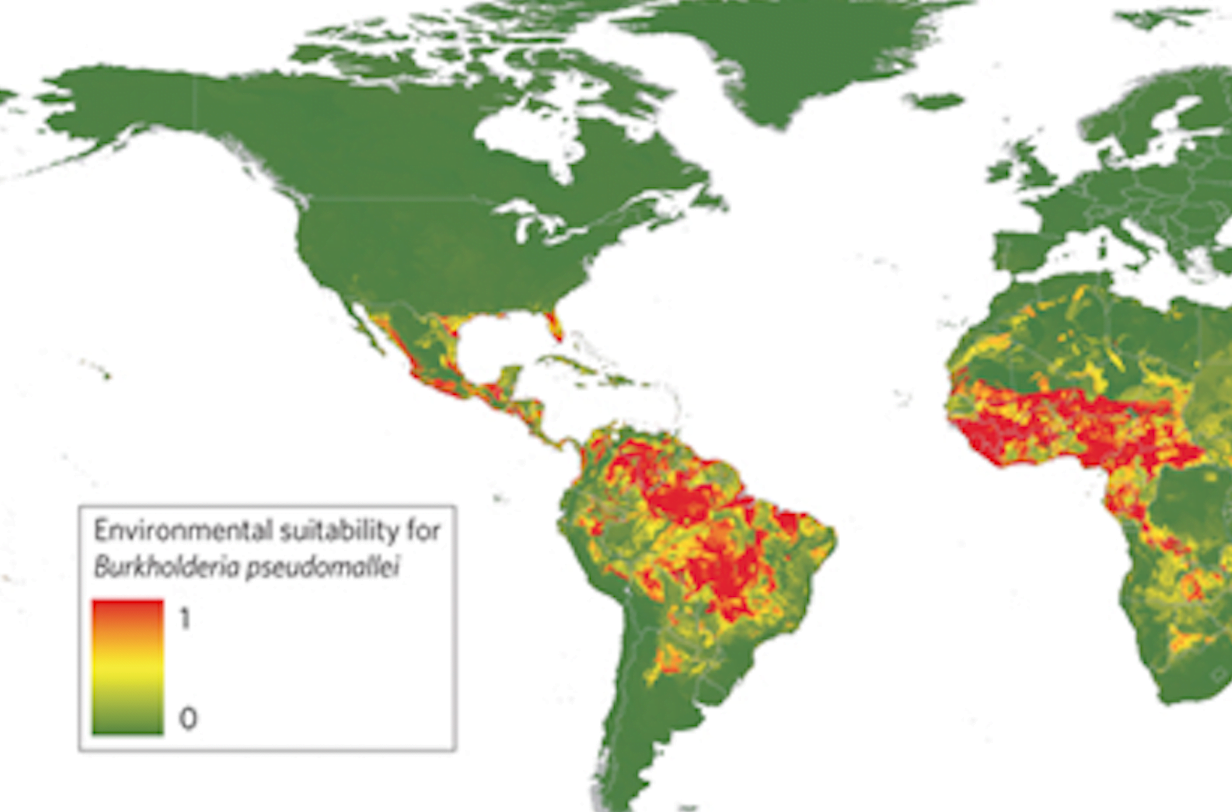

Melioidosis is a little-known bacterial infection that affects both humans and animals. It responds to very few antibiotics and is fatal up to 40% of the time. It hasn’t gotten a lot of attention because we believed it was rare, and limited to only certain parts of the world. At least, that’s what we used to think. Now, a new article in Nature Microbiology argues that melioidosis isn’t rare, it’s merely under-reported – and climate change is expanding its territory.
“Predicted global distribution of Burkholderia pseudomallei and burden of melioidosis,” was published on January 11, 2016. It presents an evidence-based map of where melioidosis is likely to occur in the future, and provide estimates for prevalence of the infection worldwide. It estimates that there are 165,000 cases of melioidosis globally every year. 89,000 of those cases lead to death – a number comparable to measles, which kills 95,600 people a year, and higher than dengue. It finds that melioidosis is endemic but under-reported in 45 countries. More ominously, it also finds that melioidosis is most likely endemic in 34 countries where it has never been reported at all.
How it Kills
Melioidosis is caused by the bacteria Burkholderia pseudomallei, which lives in soil. Burkholderia pseudomallei is inherently resistant to many antibiotics, making the infection difficult to treat. It is also difficult to diagnose; it can have many different symptoms. If it is treated with the wrong drugs, you can see a fatality rate of 70%.
A New Way to Measure Melioidosis
Rather than relying only on epidemiological surveillance data for melioidosis, the article used a sophisticated statistical model to analyze global prevalence rates and estimate the current world prevalence of melioidosis. Their estimates are much higher than the data currently reported globally. The authors argue that their model is accurate, and the problem lies with under-diagnosis and under-reporting, suggesting that, “that the burden of melioidosis in many tropical developing countries is hidden and masked by under-development of microbiological facilities, lack of relevant clinical and laboratory expertise, and poor reporting systems.”
Coming to America?
The predictions for the future geography of melioidosis are very interesting. The authors complied a score for melioidosis compatibility based on a number of climate and environmental factors and then applied that analysis globally. They state that two countries, the US and Japan, “have areas that would be suitable for B. pseudomallei establishment. These include a geographically contiguous area covering southern parts of Florida, Louisiana and Texas in the USA, and Okinawa and Kagoshimaprefectures in Japan. These areas share similar environmental values to the Caribbean islands and Taiwan where melioidosis is known to be endemic…”


What it didn’t say
Melioidosis is a climate change disease. The article alludes to that truth, but doesn’t come straight out and say it. Melioidosis is going to be a climate change winner. It is a soil bacteria that likes highly saline soil, which we’ll see more of as the sea level rises. It likes soil which has been heavily altered by humans for more productivity, which we’ll be doing more of as climate change affects crop yields. Furthermore, the coming spread of melioidosis is part of a broader trend. All tropical diseases are capturing more territory as the climate changes.
One sentence takeaway
You may have not heard of Melioidosi, but it is a hard to treat infection with a high fatality rate and there are more cases of it out there than we realized.
